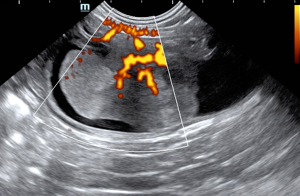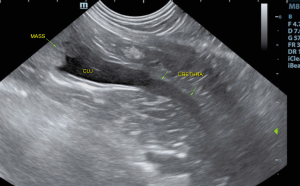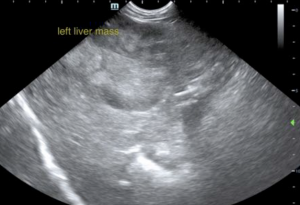Presented with clinical signs of a UTI or worse? Schedule an ultrasound earlier rather than later especially if nonresponsive to a first round of treatment. When you see a mass like this, think – Is it resectable and how do I evaluate for resectability? We’ve got you covered with key SDEP positions 1-3: long axis fan, short axis fan, Doppler of the mass, long and short axis of the cysto-urethral junction, and a long urethra into the pelvis. We recommend at least 4cm if not more, to fully evaluate for any masses further down the road and avoid surprises later. Decrease your depth to eliminate wasted space under the bladder, bring out that linear probe and focus on the ureters to look for possible ureteral invasion (see our Case of the Month July 2018). And don’t be tempted to only assess the primary issue - always do a full abdominal scan, so as not to miss other pathology such as the liver masses in this case. These brilliant images are by one SonoPath's own Diane McFadden, RVT, SDEP™ Certified Clinical Sonographer, Director of Mobile Operations and Education. Special thanks to Dr Lee, Dr Logan and the staff at Mount Olive Veterinary Hospital for their management of this case in providing an answer and options for the owners.
DX
Bladder mass. Left-sided liver masses.
Outcome
CT evaluation is warranted for surgical planning. The bladder mass appears resectable with resection at
the ventral wall. The liver mass may be resectable as well; however, CT evaluation would be best for
surgical planning. The spleen appears subjectively benign. These are likely two separate issues likely
carcinoma of the bladder and likely hepatocellular carcinoma of the liver.





Comments
The owners declined any further diagnostics and have opted to keep the dog comfortable for as long as possible.
Oncology consultations for cases like these can be utilized through Sonopath.com. You can select the oncology drop down at http://spa.sonopath.com/.